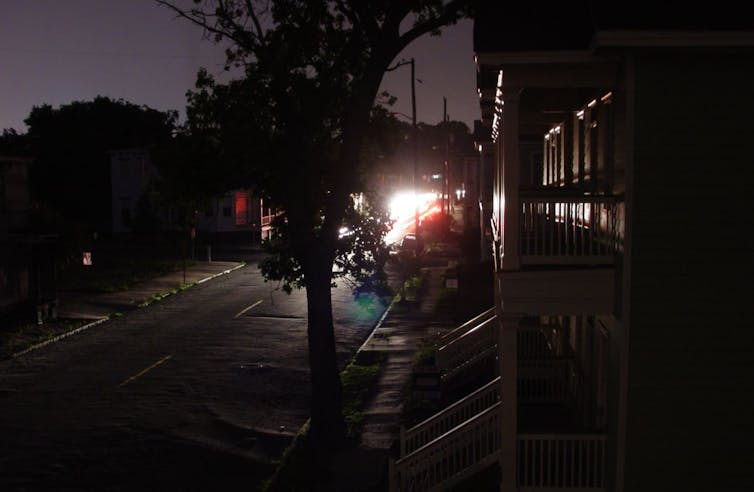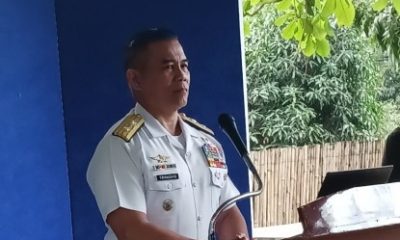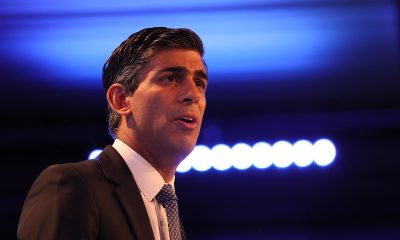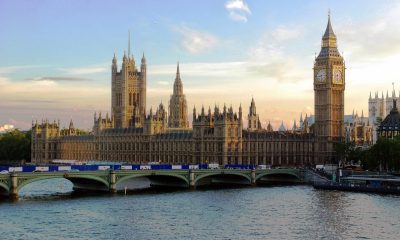News
Storms and wildfires can cut electricity, but microgrids help communities take control
As wildfires, heat waves and hurricanes sweep across North America, residents are bracing for the power outages that come with these extreme weather events.
Strong winds can knock down electrical lines or blow dry vegetation like dead tree branches into power lines and ignite wildfires. Utilities may intentionally shut down targeted sections of power lines in fire-risk areas in the interest of public safety. In October 2019, for example, with wildfires burning through California, PG&E, the largest utility in the United States, cut the electricity to two million homes.
But turning off the power can also have negative effects on communities. People rely on a stable electricity supply for evacuation warnings, health care and essential services such as water and lighting.
Local electricity generation could mitigate these disruptions. During the California blackouts in 2019, Blue Lake Rancheria, an Indigenous community in northwestern California, was a “beacon of energy” in a sea of darkness. The community had previously constructed a state-of-the-art microgrid that allowed it to disconnect from the main grid and provide homes and businesses with solar-generated electricity while other Californians were left without power.
This year, the COVID-19 pandemic has further complicated the unplanned power outages caused by wildfires, hurricanes and other disasters. People are increasingly dependent on their home electrical supply to communicate, work and learn — and reduce their social isolation. In addition, travel restrictions, isolation requirements and supply chain problems for equipment and materials are making it difficult for utilities to respond quickly to power outages.
The trouble with the status quo
In the power systems that dominate North America and Europe, electricity is typically generated in large quantities far away from population centres and transmitted by power lines over long distances. More than 430,000 kilometres of transmission lines crisscross North America.
Damage from snowstorms, wildfires and windstorms are a leading cause of power outages in the U.S. Climate change is expected to increase the frequency and severity of extreme weather events and power outages have become an accepted practice.
Other events, like a pandemic, can also disrupt access to electricity due to the limited pool of skilled workers. The timely restoration of an outage event is unlikely if illness (or other circumstances) limit the availability of skilled talent.
During the COVID-19 pandemic, some utilities sequestered essential workers to ensure continuity of service. But utility service personnel may also cover a wide geographical area, moving from one community to the next, which can increase infectious disease exposure both to the community and to the workers themselves.
What we can do?
Local electricity generation can insulate communities against these challenges. Solar- and wind-generated electricity, as well as battery storage, are cost-effective and reliable. These alternative generation sources tend to be small-scale and located close to those who will use the electricity.
In addition, renewable resources do not need an outside fuel source, like diesel or natural gas. Disease outbreaks and severe weather events affect the supply and transportation of these fuel sources — refineries shut down and pipelines are damaged. Technologies such as solar photovoltaics tend to be low-maintenance and present an opportunity to train local workers to maintain the infrastructure.


(dave hale/flickr), CC BY-SA
A microgrid — a self-sufficient, energy-generating distribution and control system — puts communities on the path to self-reliance. It integrates the source of the electricity with consumption loads, such as homes and businesses, in a connected system, allowing the community to operate in isolation when the utility-scale electricity supply is interrupted.
Building resilient communities
During the California power outage in 2019, Blue Lake Rancheria helped nearby communities. It converted a hotel to a newspaper office to boost communication and took in critical patients from the county hospitals. Non-residents lined up at gas stations and convenience stores to stock up on resources they didn’t have access to in their own communities due to the power outages.
Cost and regulations are among the major obstacles to local electricity generation and the adoption of microgrids. Communities need access to capital to invest in these technologies, but it is often out of reach. In addition, myriad regulations govern the generation, distribution and sale of electricity, and these uncertainties can be difficult to navigate.
In Canada, there are various incentives programs across the provinces to help communities investing in green infrastructure. For example, the Federation of Canadian Municipalities has multiple funding programs, like the Green Municipal Fund, that assist municipal partners from creating plans to funding capital projects. In British Columbia, the Community Energy Leadership Program has a guide listing resources and support for communities interested in undertaking clean energy projects.
Communities should engage in community energy planning to help define community priorities around energy and establish actions to achieve the community’s energy goals. The plan showcases a community’s commitment to taking action and advocates for support on funding opportunities and policy changes. The planning process drives education and awareness within local partners on the importance of a reliable electricity supply.
Shifting the focus of renewable electricity generation from a purely economic lens to one that sees the value in its many societal benefits — energy independence and security, skilled local jobs, zero-emissions electricity — can help build more energy-resilient communities.![]()
![]()
Jeanie Chin, Manager, Centre for Grid Innovation, Northern Alberta Institute of Technology
This article is republished from The Conversation under a Creative Commons license. Read the original article.





















